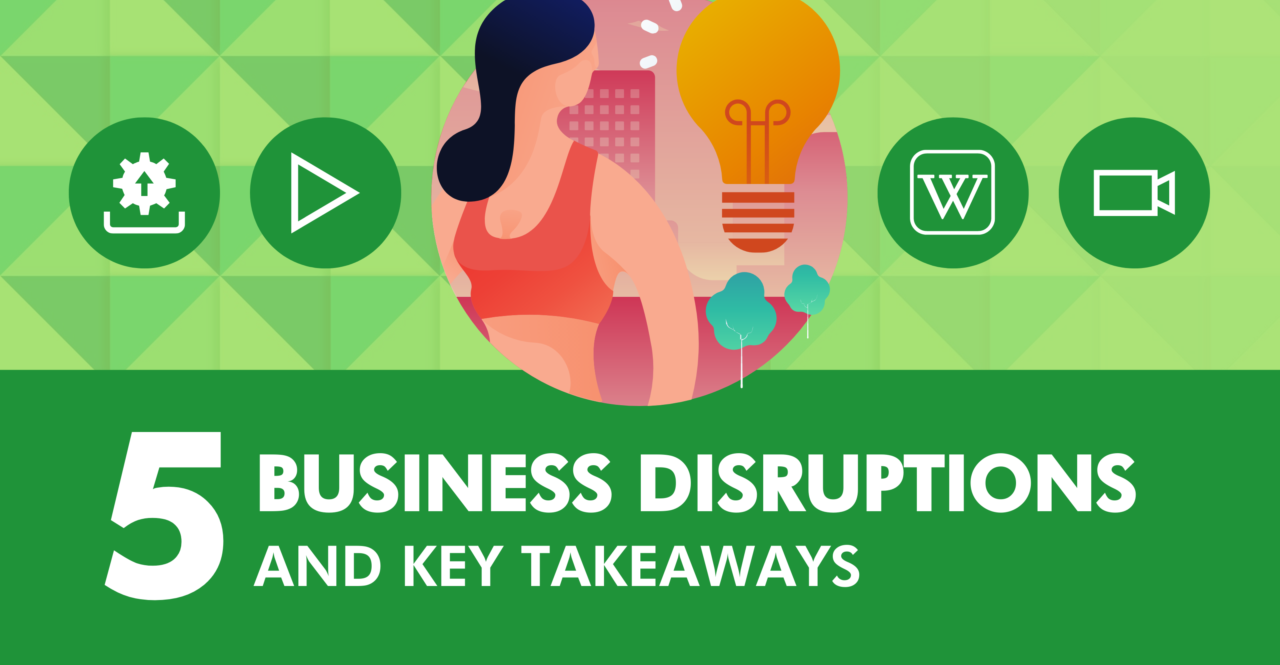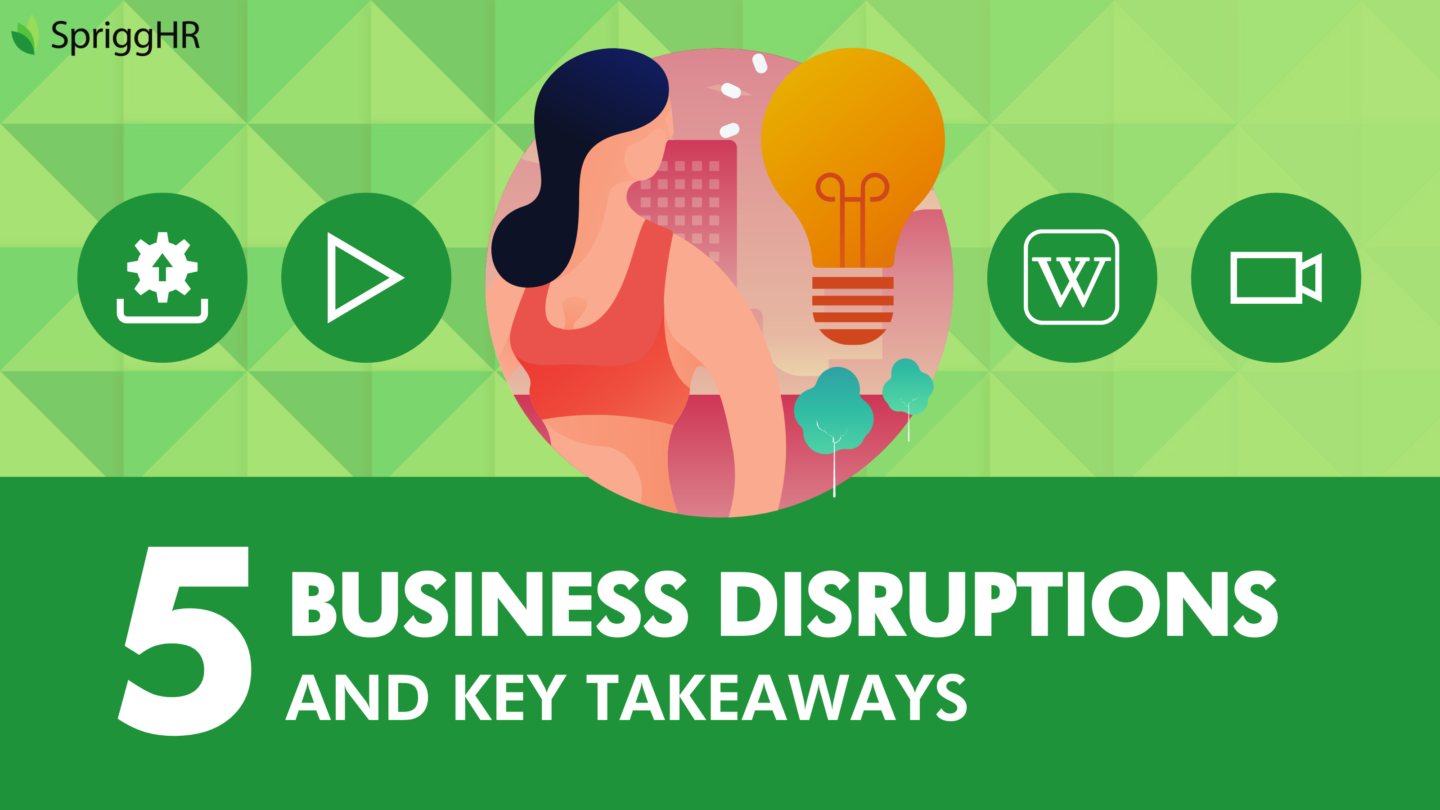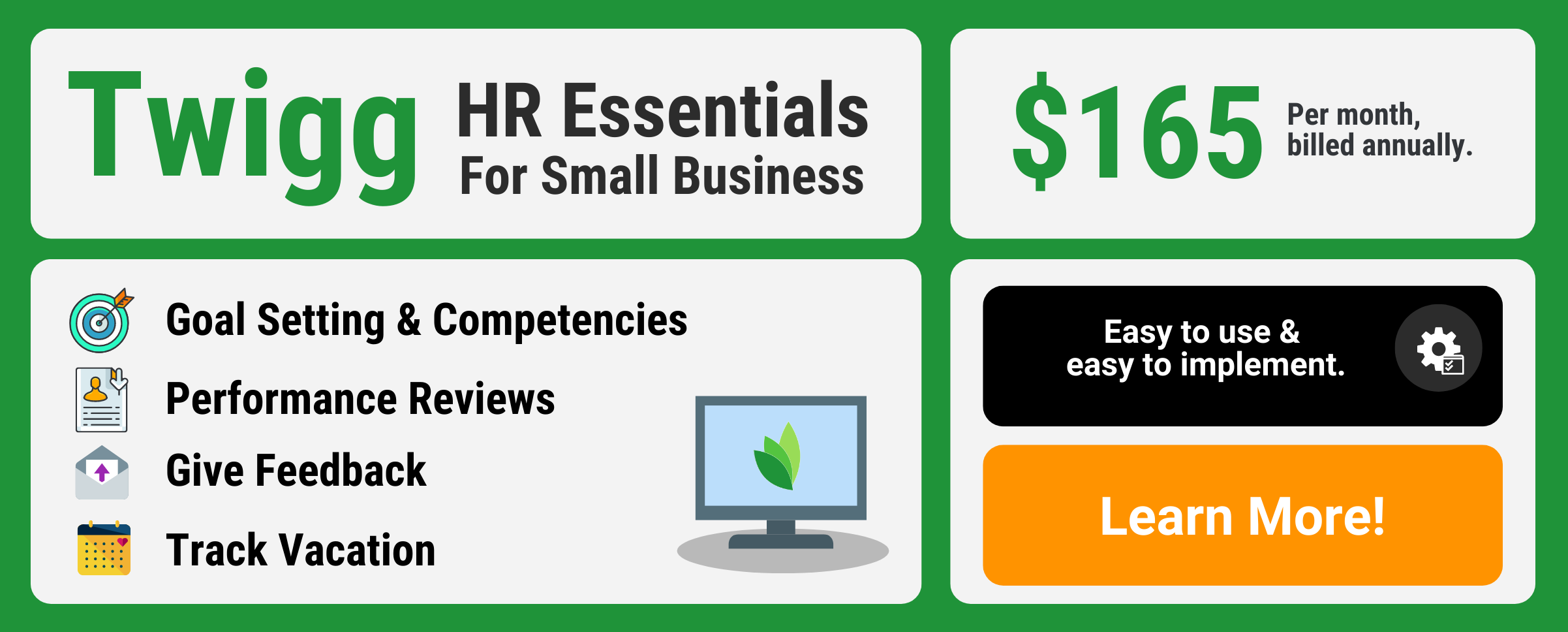
5 Business Disruptions Examples and Key Takeaways
Understanding business disruption can help you get a better, clearer understanding of what true and productive innovation is, and possibly, improve your company’s overall results.
What is Business Disruption?
If you have ever encountered an article or think about a piece of popular new software, app, or tech-based product that has skyrocketed in use recently, it’s likely that at some point, you encountered it being described as “disruptive”. A hot-button term thrown around regarding many different business innovations, when it is applied to concepts in your own organization, it can be easy to write off as an invaluable assessment.
However, “disruption” goes beyond rudimentary critiques of start-ups and failed companies and products. Understanding what business disruption is can be the key to your understanding of what strong innovation is and can even help improve your business to produce more truly innovative services and products. So, what is business disruption?
When it comes to business strategy, “disruption” refers to a process in which market entrants come armed with non-conventional business models, and what at their outset seem to be poor-performing products actually come to challenge and eventually replace industry incumbents over time. Simply put, it is the process in which an underrated, or unexpected, product or service starts to become popular enough to replace, or displace, a conventional product or service on the market.
Innovation vs. Disruptive Innovation: What’s the Difference?
The concept of innovation is heavily linked to the idea of business disruption, largely because the origins of disruptive products and services derives from an unconventional approach to business and market innovation. In “true” disruptive innovation, the unconventional product takes root at the bottom of the market and develops a poor reputation because of it. However, over time, and due to a number of factors such as lower costs or higher accessibility, the product actually becomes more appealing than its contemporaries within the industry.
This is not the same as the traditional approach to innovation, also referred to as “sustaining innovation”. Traditional innovation is when new inventions and modifications are introduced by businesses in an attempt to stay relevant with customers, and competitive in the job market. That is not to say these innovations are invaluable, but they do run a higher risk of becoming too sophisticated, too inaccessible, or too expensive to hold any lasting power on the market. As a result, when sustaining innovations are deemed too frivolous, customers begin to look to less expensive, sometimes radical alternatives to meet their business needs, spiking the success of those disruptive innovations.
Business Disruption: Examples and Key Takeaways
The typical defining traits of disruptive innovations are lower gross margins, smaller target markets from the outset, and a product or service that is usually much simpler than their industry contemporaries.
However, organizations need to remain on guard when it comes to labelling any sort of industry-challenging innovation as disruptive. If the term is used too facetiously, it begins to undermine what true disruption actually is. It shines a spotlight on start-ups that have already garnered significant attention, while true market disruptors are climbing the industry ladder elsewhere, unnoticed by the giant competitors they’re meant to replace.
In order to develop a thorough understanding of what true disruption actually is, it is helpful to look at real-world examples of business disruption, and recognize when the term was suitable, and when it was not.
3 Examples of What Business Disruption Is
1. Netflix and Streaming Services
Netflix and all other streaming services are in the process of an ongoing disruption in the entertainment industry. They largely influenced the slow extinction of video rental stores and are now responsible for the ever-growing cancellation of cable subscriptions worldwide.
OTT options (over-the-top, in reference to devices that go over cable boxes to provide access to TV content) emerged seemingly out of nowhere several years ago and have since skyrocketed into the leading position in providing entertainment to customers. It was deemed a low-cost alternative to conventional subscriptions from the get-go, and once customers caught on to the rising popularity and innovation offered by streaming services, they began to think of their media consumption in an entirely different way.
2. Wikipedia
A lesser recognized form of true disruptive innovation is the international hub for easy-access research, Wikipedia. For centuries, it was encyclopedias that existed to provide important details on various subjects. That were written and published for profit, with hardcover volumes being released regularly due to the constant updates and changes to information that needed to be included. Wikipedia eradicated that necessity for expensive, unsustainable information access. It is constantly updated, available for free, and though it has an air of distrust surrounding the information it presents, it still was enough to drive Encyclopedia Britannica to publish their final volumes back in 2012, after 244 of circulation.
3. Skype
Skype, and video chatting platforms such as Google Teams and the booming Zoom, are perfect examples of true business disruption. While the existence of these types of platforms have been the norm for years, its conception was far more disruptive than many may remember. It introduced a new way of international communication, where users globally can chat, call, and video chat with each other for free. While its original target market was small, a key indicator of a disruptive innovation, Skype’s daily user count has ballooned up to 40 million. In response to Covid-19 and the increased demand for virtual meetings and learning spaces, Zoom increased its monthly active user count to 12.92 million. For some, these disruptive innovations have almost entirely replaced mainstream forms of communication altogether.
2 Examples of What Business Disruption Isn’t
1. Uber
Often cited as an example of disruption, the modern tech giant Uber is not an actual example of true business disruption. On the surface, it does have a few of the key indicators of a disruptive innovation. It has almost completely replaced the taxi industry for many travellers throughout the U.S. and internationally, with an annual revenue coming it at 65 billion USD last year alone. It offered a traditional service at a considerably lower price point and tore up the rule book of the taxi industry altogether.
But, Uber still cannot be classified as disruptive, since it didn’t open up a new market or capitalize on low gross margins. The taxi industry was in no way suffering or seeking rapid innovation in fears of it going under. Uber simply took the typical, successful taxi service model, and upgraded it with tech to make it more convenient and comfortable, and less expensive for the consumer. While both extremely innovative, and wildly successful, Uber cannot be classified as a disruptor.
2. Google
Google as a branded corporation has evidently explored, and dominated, many areas of tech. While it could be considered a disruptor in some of those fields, its emergence as the dominant search engine is largely mislabelled as a business disruption. Google was one of the first online companies to prove the value and potential of online search, and the very first to make astronomical amounts of money from online advertising. This means it did play a critical role in helping to spawn an entirely new industry, if not several. However, it still cannot be classified as a disruptor, simply because it wasn’t the first search engine. Similar to Uber, it took an existing model and improved upon it in way that pushed them to the top of the industry. While an extremely impressive feat, this doesn’t qualify as a true disruptive innovation.
Key Takeaways
Evidently, all entrepreneurs are not likely to found corporations or products as internationally and historically successful as those listed above but garnering a true understanding of what innovation is involves distinguishing it amongst some of the top corporate performers that exist today. Some of the key takeaways from these distinctions about innovation include:
- Not all innovation is disruptive, and it doesn’t have to be. Disruptive innovation is only one type of innovation. In order to be a true gamechanger in your industry, you don’t necessarily have to be a “true” disruptor.
- True disruption is risky. Even with a good vision, there is no guarantee that a new technology or disruptive innovation will actually take hold in your industry. Some inventions require several phases of evolution before they reach their final, most effective form. That means several losses of inventions in the shuffle before you reach that final point, and losses from unsustainable practices, market shifts, or stagnation.
- Disruption is oftentimes stealthy. Understanding business disruption means understanding that it is far more than simply creating better ideas for an industry. A large part of it is staying on the defensive, keeping an eye out for new competition that might disrupt the industry in the future. If a start-up is labelled as disruptive, you should take notice, but the biggest threats are those you never see coming. Take all market threats seriously, and don’t discount underperforming competitors with lower profit margins and a smaller target market.
- Business disruption takes time. While there are obviously some exceptions, no truly sustainable industry disruption happens overnight. Wikipedia’s conception was in 2001, meaning it took them 11 years until they overthrew Encyclopedia Britannica. Uber was founded by two graduate school friends in 2009 and didn’t expand outside their base city of San Francisco until 2 years later. True business disruptors don’t change the market entirely right after they enter it – it can take years, and sometimes decades, for their innovative ideas to take hold.
In Summary
When you have a thorough understanding of what business disruption truly is, you’ll not only be able to recognize and wade through those mislabelled start-up articles that circulate in market gossip every few weeks, but you’ll also be more prepared to find faster, more sustainable forms of innovation for your own company. You may not find yourself creating the next Netflix, or Zoom, or Wikipedia, but you can at a minimum guard yourself and your company against potential industry disruptors, and come up with more competitive solutions that will keep your business thriving well into the future.






